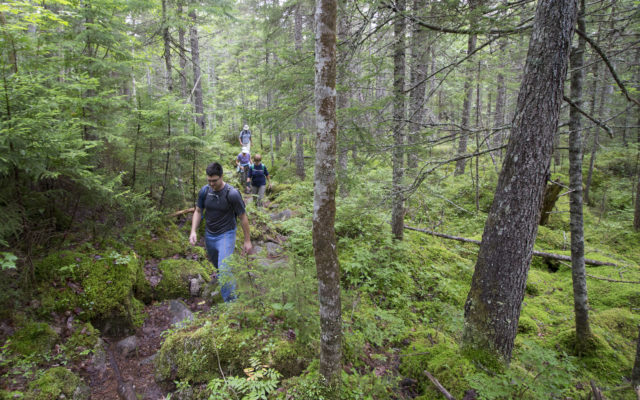
What Maine outdoor activities are good for beginners?
What activities do you suggest to someone who’s not outdoorsy but wants to be?
— Aspiring Outdoor Person
Dear Aspiring Outdoor Person:
First of all, I think it’s great that you or someone you know is looking to spend more time outdoors. I’m a big believer in the benefits of fresh air and making connections with the natural world. You (or they) won’t be sorry for taking this step.
Speaking of steps, one of the first activities I’d suggest for a beginner outdoor person is hiking (which is basically just taking lots and lots of steps). Hiking is one of the most accessible outdoor activities. It doesn’t require a lot of skill or special equipment, and there are public trails all over Maine. You’ll never run out of places to go.
To start, I suggest finding some good, comfortable footwear (sneakers or boots) and putting together a backpack. For easy day hikes, all you’ll need is water, snacks, a trail map and a light source, such as a headlamp. If you get serious about it, I’d also suggest carrying a first aid kit and survival gear. The Appalachian Mountain Club provides a great list of suggested hiking gear and apparel at outdoors.org.
To get started, here’s a list of 11 easy mountain hikes in Maine. But if you’re not keen on walking uphill, no worries. Here’s a list of easy, family-friendly hikes, most of which don’t involve mountains.
And for wheelchair users and people who struggle walking over uneven terrain, Maine is home to many wheelchair-accessible trails. Some of my favorites include the Orono Bog Boardwalk in Bangor and Orono, Ship Harbor Nature Trail in Acadia, and trails at Bog Brook Cove Preserve in Cutler, Quoddy Head State Park in Lubec and Aroostook National Wildlife Refuge in Limestone.
Another great outdoor activity for beginners is kayaking or canoeing on “quiet water,” which I define as freshwater water without big waves or current. In Maine, that can easily be found at the state’s many ponds, lakes and streams. Quiet water paddling is fairly easy to learn and it’s not as technical or dangerous as sea kayaking or whitewater paddling.
One obvious barrier to paddling is the equipment. Recreational kayaks and canoes can be expensive. You’ll also need a paddle and PFD (personal floatation device). Some outdoor destinations, such as outfitters and campgrounds, rent out this gear. Also, some land trusts and other outdoor organizations host paddling events in which boats, paddles and PDFs are provided. I suggest checking out the event calendar of Hirundo Wildlife Refuge, which is located in Old Town and Alton and leads guided paddling trips for beginners and provides the gear.
For winter, I suggest snowshoeing, which is easy to learn and will warm you up in no time. Snowshoes usually cost between $60 and $200, so they’re a bit of an investment, but they will make outdoor exploration much easier when the ground is covered with multiple layers of snow.
Basically, snowshoes help you stay on top of the snow — for the most part. You’ll still sink a little bit. That can’t be helped. Snowshoeing will require you to pick up your knees and walk with a wider stance, which can be awkward at first, but it’s a great workout, and it’s a whole lot better than simply walking in boots and sinking to your knees in snow (a disaster called “post-holing”). Hiking poles fitted with snow baskets will help you maintain your balance while snowshoeing. They also distribute some of the work to your arms.
For ideas of where to go, check out this list of easy snowshoe spots in Maine, and this post of additional snowshoe spots and winter hiking tips.
Lastly, I suggest that you select one thing about nature that you’re excited about. It could be birds or mushrooms or trees, the views from mountaintops or the history of old stone walls and foundations. These things can inspire you to get outside. For me, being active outdoors has always been less about the actual activity (hiking, paddling, snorkeling, etc.) and more about the things I see, hear, smell, taste and feel along the way.
Whatever activity you choose, start small and close to civilization, working your way up to more challenging adventures. One easy way to increase your safety is to rope in a friend or family member to join you. Also, before each outing, tell someone (who cares) exactly where you’re going and when you plan to return. That way, if you don’t turn up, they’ll know where to start looking.
Stay safe, and check for ticks after every outing!
Sincerely,
Aislinn Sarnacki
To submit a question or comment for the Ask Aislinn series, email asarnacki@bangordailynews.com or use the submission box on the Act Out homepage, bangordailynews.com/act-out.